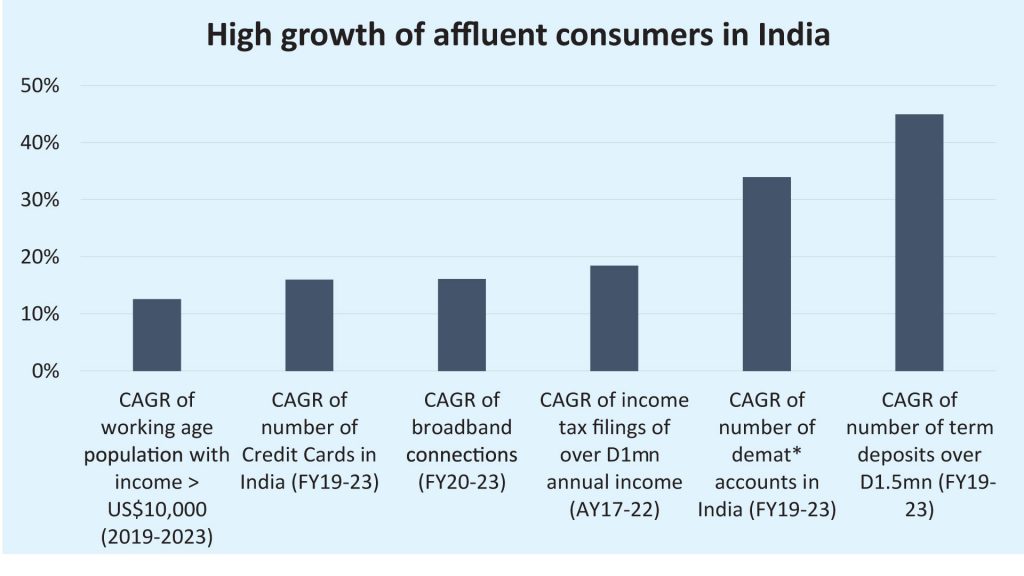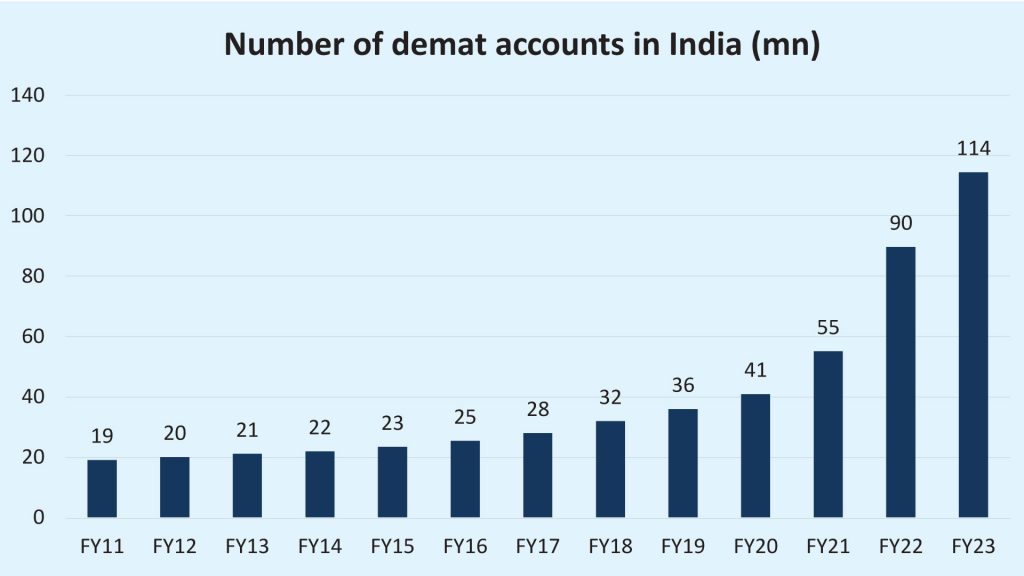

 Indians in the higher income bracket are growing in number, spending more, saving more and investing more, reveals ‘The rise of the Affluent India’, a report by Goldman Sachs. Here are some numbers that indicate the pace of growth of affluent Indians. During 2019-2023, Indians with an annual income exceeding $10,000 grew 13% CAGR. During the same period, number of credit cards grew 17%, demat accounts grew 33% and term deposits over Rs1.5 million grew 45%. Goldman Sachs expects that this affluent population will rise from 44 million today and cross 100 million by the year 2027.
Indians in the higher income bracket are growing in number, spending more, saving more and investing more, reveals ‘The rise of the Affluent India’, a report by Goldman Sachs. Here are some numbers that indicate the pace of growth of affluent Indians. During 2019-2023, Indians with an annual income exceeding $10,000 grew 13% CAGR. During the same period, number of credit cards grew 17%, demat accounts grew 33% and term deposits over Rs1.5 million grew 45%. Goldman Sachs expects that this affluent population will rise from 44 million today and cross 100 million by the year 2027.
“There has been a significant increase in the value of financial and physical assets in India in the past 3 years which is driving an increasing wealth effect in ‘Affluent India’. The 3 key asset classes that have seen a large increase in value over FY19-23 have been 1) equities, 2) gold and 3) property. The increase has been the largest for equities and gold, while property prices have seen a higher rate of appreciation in the past 3-4 years,” says the report.
The impact of this trend is that companies that target the affluent customers are performing better than those serving the mass customers. These trends are visible in FMCG (Nestle India growing faster than Hindustan Unilever), footwear (Metro growing faster than Bata), fashion (Trent growing faster than V-Mart), passenger vehicles (SUVs growing faster than entry level cars) and 2-wheelers (Eicher growing faster than the industry).
As a result, companies in categories which largely address top income consumption like jewellery (Titan), travel (Makemytrip, Indian Hotels), premium retail (Phoenix Mills), premium online beauty (Nykaa) and premium healthcare (Apollo Hospitals) have seen strong growth, says the report.
4 sectors which have seen the largest increase in consumption for top 10% of urban India vs the average consumption in India are durable goods, medical services, out of home food and jewellery. The report then goes on and lists 10 investment ideas based on this affluence trend.
Read more:
Art insurance market poised for critical growth

RPA links digital channels to traditional systems









